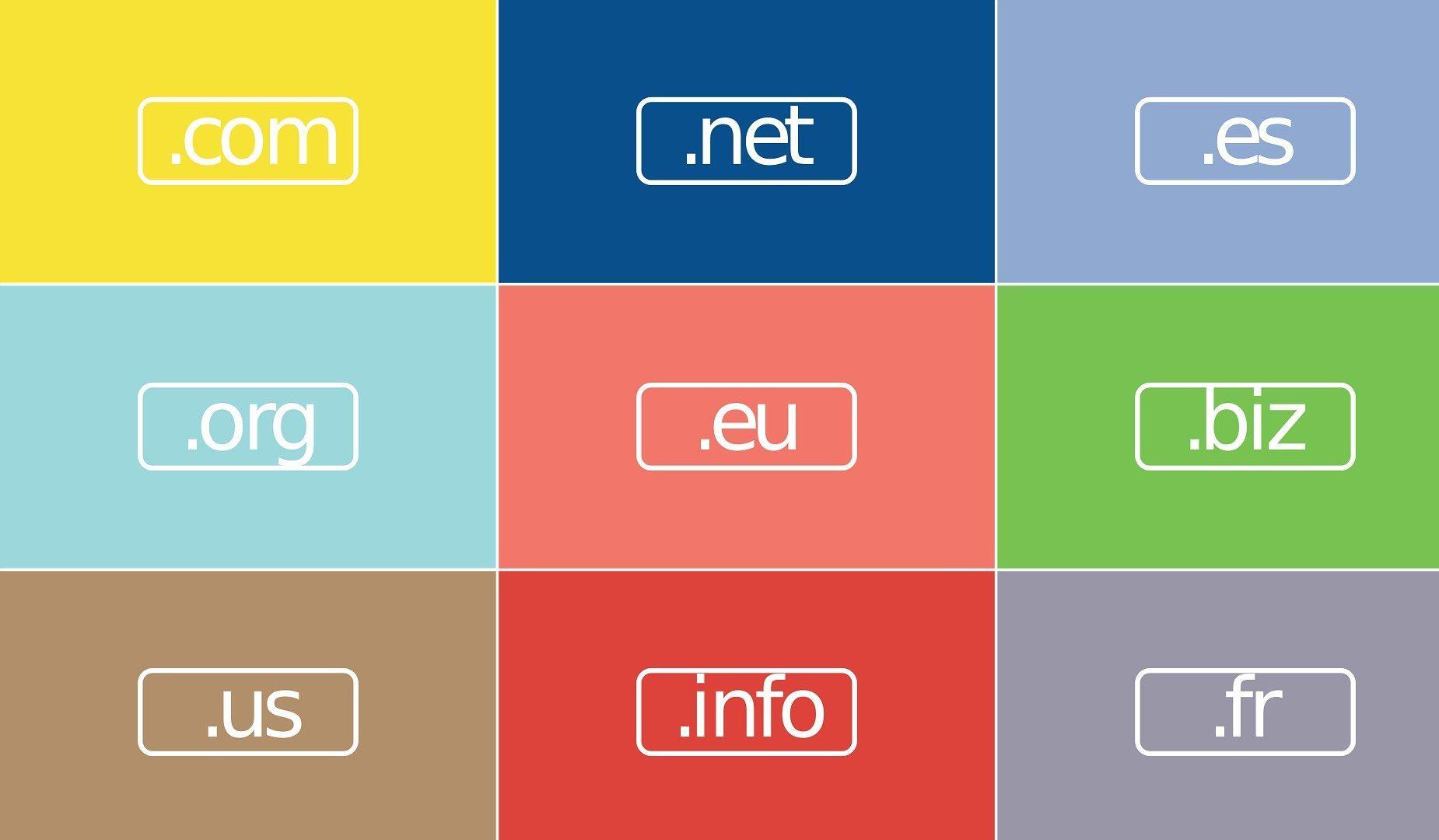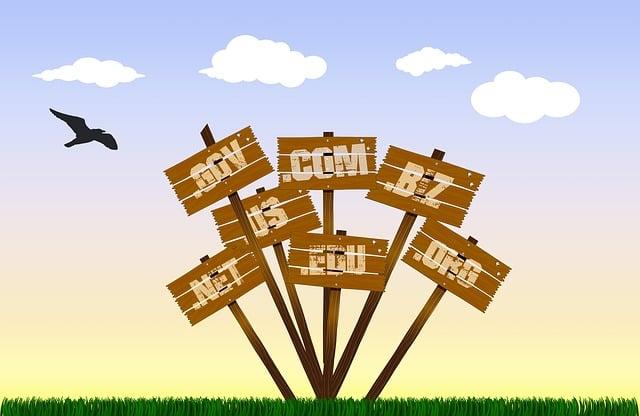Table of Contents
- Understanding the Basics of Domain Flipping and Its Market Dynamics
- Identifying Profitable Domain Names Through Effective Research Techniques
- Strategies for Maximizing Returns in Domain Reselling
- Navigating the Legal Aspects of Domain Flipping
- Building a Sustainable Business Model Around Domain Investments
- Q&A
- In Retrospect
Understanding the Basics of Domain Flipping and Its Market Dynamics
Domain flipping involves purchasing domain names at a lower price with the intention of reselling them at a profit. The process can seem straightforward, but a successful domain flipper must understand various factors that influence the value of a domain. Key elements to consider include the length of the domain, use of keywords, and overall brandability. Short, memorable domain names are generally more desirable and can command higher prices in the marketplace. Additionally, having a domain with popular or trending keywords can significantly enhance its potential value and attract buyers.
Market dynamics play a crucial role in domain flipping. The domain industry is influenced by trends in online businesses, technology advancements, and shifts in consumer demand. For instance, the rise of e-commerce has increased the value of domains related to online retail, while niche industries can see peaks in demand based on current events or emerging trends. Flippers often use tools such as keyword research and market analysis to identify lucrative opportunities. Here are some factors that can affect market dynamics:
- Industry Trends: Awareness of trending industries can lead to profitable acquisitions.
- Global Events: Major events or changes can spike demand for specific domain names.
- Seasonal Fluctuations: Some domains are more valuable during certain times of the year.
Moreover, understanding the pricing structure and platforms where domains are traded is vital. Various online marketplaces, such as Sedo and GoDaddy Auctions, provide venues for buying and selling domains. Each platform has its own fee structure and audience, making research essential for optimizing sales. Potential sellers should also familiarize themselves with tools that assess domain valuations, ensuring they price their investments competitively. Below is a brief comparison of popular domain marketplace platforms:
| Platform | Fee Structure | Target Audience |
|---|---|---|
| Sedo | Commission on sale | Global buyers |
| GoDaddy Auctions | Listing fees + commission | Domain investors |
| Namecheap Marketplace | No listing fees | Small business owners |


Identifying Profitable Domain Names Through Effective Research Techniques
When venturing into the world of domain flipping, understanding how to identify profitable domain names is crucial. One of the most effective techniques begins with conducting thorough keyword research. Utilize tools such as Google Trends, SEMrush, or Ahrefs to discover trending keywords and phrases. This will not only provide insight into what potential buyers are searching for but also help in evaluating the domain’s future resale value. Looking for domains that incorporate these keywords can set the foundation for a profitable flipping strategy.
Additionally, consider the domain’s length, readability, and memorability. Short, catchy names that are easy to remember and spell tend to have a higher demand. Utilize domain name generators to brainstorm creative combinations that leverage popular keywords. It’s also wise to check domain availability on various extensions, especially .com, as they are often seen as more valuable. Remember, the simpler the name, the easier it will be for customers to find it and recall it when needed.
Another important aspect is analyzing existing domain sales to gauge market trends. Platforms like NameBio offer insights into recent domain sales, helping you pinpoint what similar domains sell for. Pay attention to the following factors when reviewing sales data:
| Domain Name | Sale Price | Date of Sale |
|---|---|---|
| example.com | $5,000 | January 2023 |
| bestbusinessideas.com | $3,200 | February 2023 |
| trendingtechnews.com | $7,500 | March 2023 |
Studying these metrics can assist you in identifying which niches have more potential profitability and help refine your domain selection process further. By combining these research techniques, you can increase your chances of acquiring domains that not only attract attention but also resonate with buyers, ensuring you’re positioned for successful flips.


Strategies for Maximizing Returns in Domain Reselling
To effectively boost your profits in the domain reselling market, it is essential to conduct thorough keyword research. Understanding which keywords are trending can help you identify domains that are likely to be in demand. Use tools like Google Trends and keyword planners to discover which words and phrases people are currently searching for, then target those in your domain acquisitions. Keep a close eye on emerging niches and industries, as they often present lucrative domain opportunities that have not yet been saturated.
Another powerful strategy is to enhance the appeal of your domains. This can be achieved by creating a strong brand presence around your domains. Consider developing a simple landing page that showcases the value of the domain. Highlight its potential uses, such as online business, eCommerce, or personal branding. A well-designed landing page can make your domain more attractive to potential buyers by illustrating its utility and market potential. Additionally, investing in some SEO tactics for these landing pages can also help in drawing more organic traffic to the listings, which can indirectly increase the value of your domain.
networking within the domain flipping community can yield tremendous benefits. Engaging with other domain investors through forums or social media will not only provide you with insights into market trends but also potential buyers or sellers. Join groups on platforms like Reddit or LinkedIn where domain enthusiasts gather to share insights and opportunities. Furthermore, consider attending industry events or webinars to build relationships and tap into resources that may help you land better deals or higher resell values for your domains.


Navigating the Legal Aspects of Domain Flipping
When engaging in domain flipping, understanding the legal landscape is crucial to protect your investments and ensure compliance with regulations. One of the first steps is to be aware of trademark laws. Registering a domain name that closely resembles a registered trademark can lead to legal disputes. Always conduct comprehensive research using tools like the United States Patent and Trademark Office (USPTO) database to avoid infringing on existing trademarks. Additionally, consider implementing a process for monitoring domain names in your inventory against potential trademark claims.
Another important aspect to consider is the domain registration agreements from various registrars. Each registrar may have specific terms that govern the buying, selling, and transfer of domain ownership. It’s essential to read their policies to understand your rights and obligations. Be particularly attentive to clauses related to disputes and termination of services. This knowledge can prevent unexpected issues during the buying or selling process that might impact your profitability.
As you explore the realm of domain flipping, you may also encounter cybersquatting laws. The Anti-Cybersquatting Consumer Protection Act (ACPA) is a crucial piece of legislation that protects trademark owners from individuals who register domain names solely to sell them at a profit. Familiarizing yourself with the ACPA can help you navigate tricky situations. To further clarify the differences between legitimate domain trading and cybersquatting, refer to the following table:
| Aspect | Domain Flipping | Cybersquatting |
|---|---|---|
| Intent | Buy low, sell high for profit | Registering for resale to the trademark owner |
| Legal Standing | Generally permissible | Illegal under ACPA |
| Research Required | Thorough domain and trademark checks | Avoidance of trademarks |


Building a Sustainable Business Model Around Domain Investments
In the ever-evolving landscape of domain investments, establishing a sustainable business model relies on a deep understanding of market trends and consumer behavior. Researching potential niches can help investors identify profitable opportunities while minimizing risks. Look for emerging industries or topics that show increased interest, such as renewable energy or e-commerce, and secure domains that align with these trends. Being proactive in your research lays the foundation for successful flipping.
Moreover, cultivating relationships within the industry can significantly enhance your investment strategy. Consider the following actions to build a network:
- Join domain investment forums and online communities.
- Attend industry conferences and webinars to meet potential buyers and sellers.
- Collaborate with digital marketers and SEO experts to widen your reach.
Embedding yourself in the community not only keeps you informed about market conditions but also opens doors for future collaborations and sales.
it’s essential to implement effective pricing strategies that reflect the value of your domains. Creating a clear pricing model can streamline your business approach. You might categorize domains based on factors such as length, keyword relevance, and extension type:
| Domain Type | Valuation Range |
|---|---|
| Short, .com | $500 – $5,000+ |
| Keyword-rich, .net/.org | $100 – $2,000 |
| Long-tail, various TLDs | $10 – $500 |
By tailoring your pricing strategy based on these categories, you can create appealing offers to potential buyers, further enhancing your domain flipping business’s sustainability and profitability.

